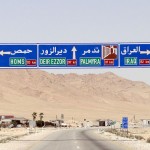Paul Eaton Quoted by the New York Times on Obama’s ISIS Strategy
A White House Position That Stands on a Narrow Definition of War
By Mark Landler
September 18, 2014 | New York Times
The American advisers are armed, and if they are shot at by the enemy, they are authorized to return fire. In a close combat advisory role in a city, experts said, the American troops would tell Iraqi commanders which house to hit, how much ammunition to use in an assault, and how to organize medical evacuation for their troops.
It is not the first time the United States has gotten tangled in semantics on this issue. In late 2008, before Mr. Obama was inaugurated, the Pentagon adopted a similarly narrow definition of combat to claim it was meeting a deadline for withdrawing combat troops from Iraqi cities by mid-2009. Then as now, it left behind hundreds of American trainers and advisers, who were helping Iraqis press the war effort.
“If you’re trying to deploy a military effect on the ground, you’re in combat,” said Paul D. Eaton, a retired Army general who helped train Iraqi troops and is now an adviser to the National Security Network. “You may not be in direct combat, but it’s a combat mission.”
For the president, the political context matters more than the semantics. Sending American troops into combat in Iraq conjures memories of the 2003 invasion that launched a war he was elected in part by opposing. And even acknowledging that advisers engage in combat, there is a vast difference between 1,600 advisers and an occupying army of 150,000 soldiers.
To read more, click here.



